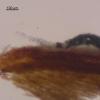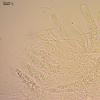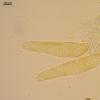
19-12-2025 10:10
Patrice TANCHAUDBonjour, récolte réalisée en milieu dunaire, a

18-12-2025 17:23
 Bruno Coué
Bruno Coué
Bonjour,je serais heureux d'avoir votre avis sur c

18-12-2025 21:17
Pol DebaenstThe identification took me to Byssonectria deformi

18-12-2025 18:07
Margot en Geert VullingsThese plumes were found on rotten wood.They strong

17-12-2025 18:35
 Michel Hairaud
Michel Hairaud
Bonjour à tous/Hi to everyone I am passing along

15-12-2025 15:48
 Danny Newman
Danny Newman
Melanospora cf. lagenaria on old, rotting, fallen

15-12-2025 15:54
 Johan Boonefaes
Johan Boonefaes
Unknown anamorph found on the ground in coastal sa

15-12-2025 21:11
 Hardware Tony
Hardware Tony
Small clavate hairs, negative croziers and IKI bb

15-12-2025 07:09
 Danny Newman
Danny Newman
indet. Rutstroemiaceae sp. on unk. fallen leavesMc
previous post of Exarmidium diaphanum gave me a hint about the position of one my unidentified specimen,
it was collected on dead branch of Chamaedaphne calyculata (N61,063892° E69,455695°). There is, probably, candidate, E. ericae, which described from twigs of Erica carnea (the same family) - i am comparing it now.
Hymenium developing under the clypeus, flat, with tiny pore (30 mk), to 400 mk broad, 80 mk thick, clypeus bluish-brown.
Clypeus from host epidermis cells and mass of greenish-blue chains of cells (some symbiont), no fungal tissue presented in clypeus (? may be it is not right to say clypeus then); asci fissitunicate, not amyloid, enlarged at base and with obtuse tip, thick-walled apex, 76 (70-85) x 16 (14-17); paraphyses cylindrical, 1,3-1,5 mk thick, with some guttules, branched; spores fusoid, 3-4-celled, cells of released spores enlarged to round (and then overall shape with constrictions), with two short cylindrical outgrowths from both ends, content with several big and many small guttules, 23,7 (20,8-26,6) x 7,9 (6,4-9,2) (18 spores).
sorry, but I can't help you with this one.
But thank you for reminding of unfinished determinations:
http://www.ascofrance.fr/search_forum/11375?
I should keep this in mind next spring-summer.
Best wishes for your determination: Marja








